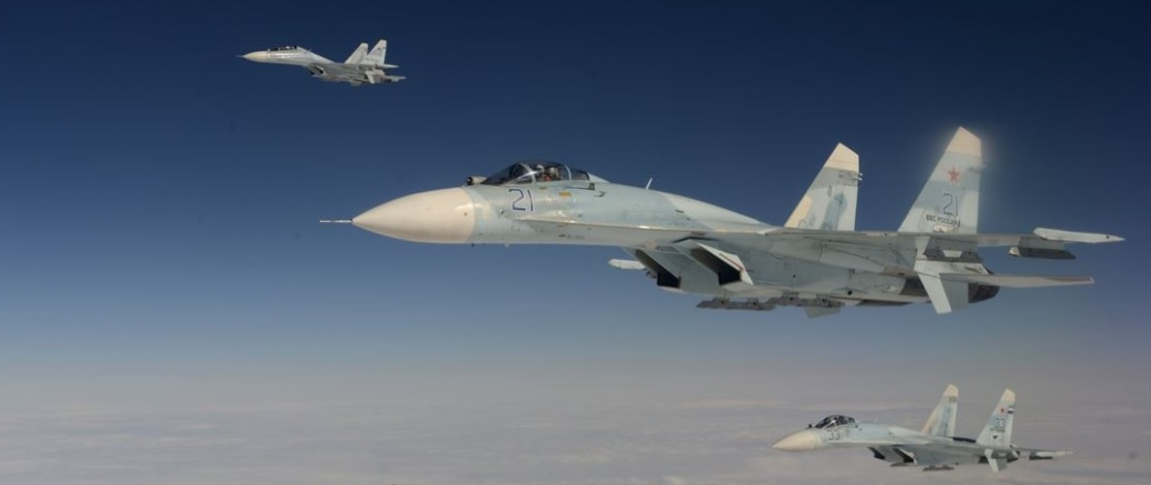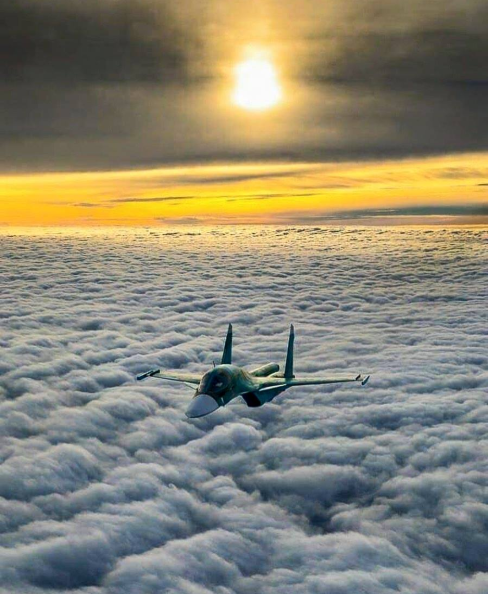Su-35


| Performance data | |
| Aircraft length | |
| wing span (m) | 14.70 |
| length (m) | 21.9 |
| height (m) | 5.9 |
| Weight characteristics | |
| maximum fuel reserve in integral tanks (kg) | 11,3 |
| maximum take-off weight (kg) | 34,5 |
| normal take-off weight (kg) | 25,3 |
| maximum combat payload weight (kg) | 8,000 on 12 hardpoints |
| Engine’s main performance data | |
| type, model | afterburning turbofan engine, 117S |
| number | 2 |
In the Su-35’s design process, the Sukhoi Design Bureau departed from aerodynamic design using the nose canard that had been used in the design of the Su-27M, Su-33, and Su-30MKI fighters and reverted to the proven classic aerodynamic design of the Su-27. The technological advances achieved at the beginning of the new decade made it possible to exclude a nose canard from the design while retaining the advantages it provided.
The airframe saw changes that enabled an increase in the airplane’s assigned service life and flight duration, the accommodation of a larger amount of fuel as compared to the Su-27, as well as the installation of new airplane systems and avionics. The design and arrangement of the fuselage nose section was also changed. Airbrake functions were transferred to differentially-deflected rudders whose design was also modified.
The structure (including major elements of the fuselage, wing, stabilizers, and landing gear) of the Su-35’s airframe was reinforced, enabling an increase in the airplane’s maximum takeoff weight. That made it possible to significantly increase the amount of fuel on board (as the Su-35 carries 11.3 tons of fuel in its integral fuel tanks while the Su-27 carries just 9.4). Along with this, the fighter is equipped with a flight refueling system and can carry drop tanks with a 2,000 liter capacity each. The payload remained the same as in the Su-27: 8 tons. The number of hardpoints grew from 10 to 12.
The “117S” type power generator with deflectable thrust nozzles, developed by Saturn Research and Production Company (NPO Saturn), has 16% higher reheated thrust than the “AL-31F” engine. The assigned service life of these engines was extended to 4,000 hours. The unique “KSU-35” digital integrated remote-control system with quadruple redundancy designed by MNPK Avionika, which performs the functions of several systems at the same time (including thrust vector control), not only improves the airplane’s flight control and maneuvering performance, but simultaneously performs active safety functions as well.
The most important difference between the Su-35 and ”4+” generation fighters is its fifth-generation avionics. The Irbis-E radar station with rotating phased antenna array designed by the V. Tikhomirov Research Institute of Instrumentation provides for the assured detection and acquisition of typical aerial targets at a range of up to 200 km (up to 170 km against ground background), and in a narrower field of view¬ – up to 350-400 km. The Irbis-E is able to track up to 30 targets at a time and guide missiles at 8 of them, without an interruption in airspace surveillance. The radar control system also provides for the selective acquisition of moving ground targets and cueing for low-level missions.
The second information channel of the weapons control system is a multi-channel infrared search-and-track system with high sensitivity and jamming resistance. It detects and tracks targets using thermal signatures at a range of up to 90 km, and also can find the range to a target (with a maximum range of 20 km for aerial targets and 30 km for ground targets). The infrared search-and-track system can also be used for illuminating ground targets to guide missiles with laser seekers. Its suspended optoelectronic unit extends the flight-control and flight-navigation capabilities of the airplane in air-to-surface mode.
Data display and navigation equipment was developed by the Ramenskoye Instrumentation Design Bureau and other member companies of SPC Tekhnokompleks in conjunction with the Moscow Institute of Electromechanics and Automatics. The integrated airplane control and navigational equipment in the cockpit is designed according to principles geared towards the optimal display of information. The data display system uses wide-screen, color, multi-functional displays and a wide-angle, color, heads-up display system, where panning terrain-map display capabilities are also provided. Cabin lighting equipment supports pilot operations with night vision goggles. The “dark cockpit” principle is implemented to reduce workload (with display of advice messages in an emergency). The pilot is also provided with a helmet-mounted pointing-and-aiming system and a set of emergency escape equipment.
The nav/attack system is comprised of: a laser inertial and satellite navigation system (SNS), radio navigation system, on-board graphics station, a survey-and-aiming optoelectronic strap-on module, fiberoptic and multiplex communication lines.
The S-108 integrated communication system developed by SPE Polet enables automatic data exchange through radio-station (2 VHF and HF) channels and voice communication with the pilot via the air terminals of link-16-type information exchange systems. Data exchange and voice communication channels are provided with cryptographic protection. The capabilities of controlling coordinated actions of a fighter group in networks of the Air Force, the Armed Forces, and the Navy are extended.
The weapons control system makes the airplane able to use nearly all modern, guided and unguided, domestically-produced aviation projectiles. The Sukhoi Design Bureau, in cooperation with academics and industry researchers, discovered ways to radically (by more than 5-6 times) reduce the airplane’s radar signature, which significantly reduces the range of its detection by enemy airborne radars and ground radar stations.
The airplane’s combat survivability is assured through two spread out engines, the multi-channel redundancy of all airplane systems, the protection of fuel tanks from explosion, as well as an electronic countermeasures system. The electronic countermeasures system comprises: an active jammer for group and individual/mutual protection, anti-radar missile guidance equipment, a radar and laser irradiation and incoming-missile alerting system, as well as an automatic dummy dispenser.
The maintenance system is fully compliant with international standards. The airplane is equipped with built-in condition-monitoring equipment and an auxiliary power unit to provide power supply for equipment and the cockpit during maintenance without the need to use ground facilities. The airplane has an on-board oxygen station.


